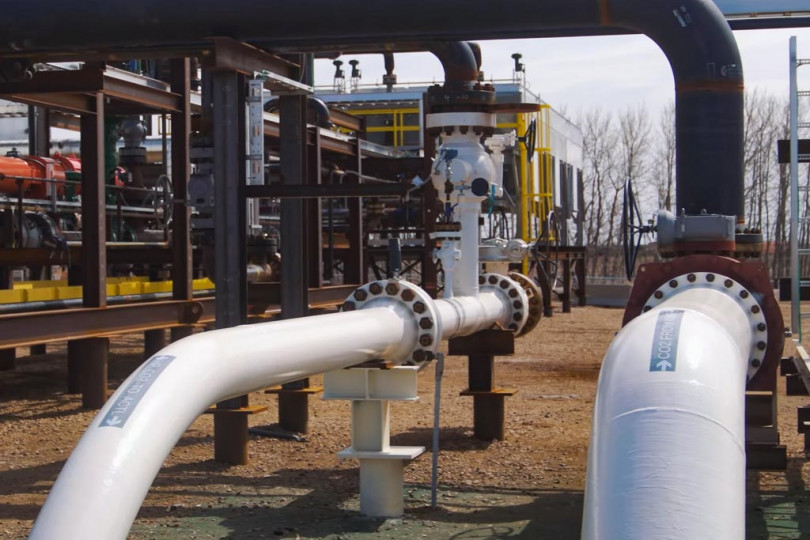The system is capable of transporting up to 14.6 million metric tons of CO2 per year—equivalent to capturing the CO2 from more than 2.6 million cars in Alberta.
Over a decade in the making, the world’s largest carbon capture, transportation, utilization and storage system, the Alberta Carbon Trunk Line, finally became fully operational this past June with help from myriad supporters, including the International Brotherhood of Boilermakers.
The ACTL includes 240 kilometers of pipeline, increasing the reach of CCUS in Canada. The system captures industrial emissions and delivers the CO2 to mature oil and gas reservoirs for use in enhanced oil recovery and permanent storage. According to the ACTL website, the system is capable of transporting up to 14.6 million metric tons of CO2 per year—equivalent to capturing the CO2 from more than 2.6 million cars in Alberta.
“As a strong advocate for CCUS technology, the Boilermakers union has been a major supporter of the ACTL efforts,” said Cory Channon, International Director of Climate Change Policy Solutions. “Its completion ushers in the potential for scale-up of CCUS operations in Canada and to increase opportunities to prove that CCUS is the right solution to save our environment, our jobs, and our economy.”
The CCS Global Institute reported that the number of large-scale CCUS facilities in operation increased to 21 with the announcement of the ACTL becoming fully operational. Currently, Alberta’s North West Redwater Partnership’s Sturgeon Refinery and Nutrien’s Redwater Fertilizer Facility are both capturing CO2 and supplying it into the ACTL, where it travels to a storage reservoir owned by Enhance Energy. The system has capacity for additional operations to be connected.
The NWR Sturgeon Refinery was designed at the same time as the ACTL system and built by Boilermakers. It became operational near the same time as the ACTL and, according to NWR Sturgeon Refinery CEO Ian MacGregor, it is the world’s only refinery designed from the ground up to minimize its environmental footprint through CCUS while producing the “high-value, low-carbon products needed to meet North America’s demand for energy.”
“We set out to make something valuable from bitumen—low-carbon diesel starting from high-carbon feedstock—and build the world’s largest carbon capture system,” he said. “I can’t remember how many times I’ve been told ‘it won’t work,’ but we never wavered. I believe today, more than I ever did, that we’re building the future of Alberta.”
Illustrating the alignment of innovation, partnerships and CCUS efforts, the NWR Sturgeon Refinery uses gasification to convert bitumen waste product into both the hydrogen required for refinery operations and a pure, dry CO2 stream that is cost-effectively captured instead of vented into the atmosphere, eliminating about 70% of the refinery’s total CO2 footprint. The CO2 captured at the refinery serves as an anchor supply to the ACTL.
“This is the kind of innovative and interconnected project we need to see more of, not just in Canada, but in the United States and around the world,” Channon said. “If we can accelerate projects like these, we will see further reduction in costs and increased efficiencies in CCUS technology. Our planet, the energy industry, our jobs and all aspects of our daily lives are depending on this.”
Worldwide, there are currently 21 CCUS facilities in operation, four under construction and 28 in development. According to the International Environmental Agency’s 2019 Sustainable Recovery report, 2,000 large-scale CCUS facilities will need to be operational by 2040 to meet the Paris Climate Agreement’s goals.







